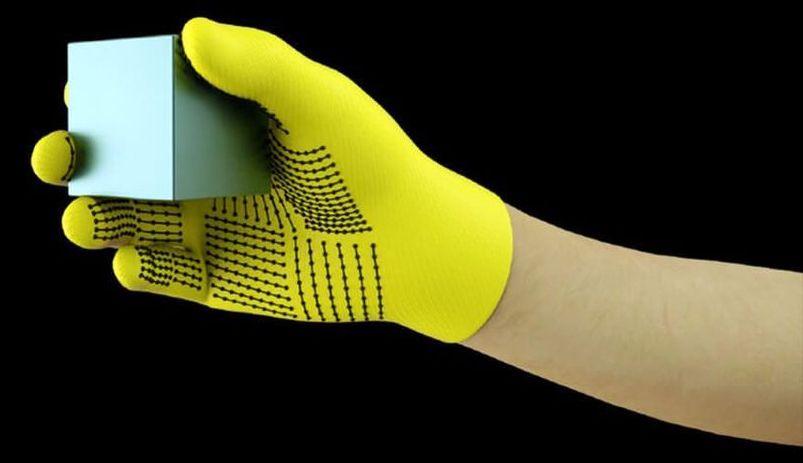Viva Space Ship Day
For 10% off your first purchase, go to
http://www.squarespace.com/austinmcconnell
PATREON: http://patreon.com/austinmcconnell
TWITTER: http://twitter.com/austinmcconnell
Viva Space Ship Day
For 10% off your first purchase, go to
http://www.squarespace.com/austinmcconnell
PATREON: http://patreon.com/austinmcconnell
TWITTER: http://twitter.com/austinmcconnell


Machines are mastering vision and language, but one sense they’re lagging behind on is touch. Now researchers have created a sensor-laden glove for just $10 and recorded the most comprehensive tactile dataset to date, which can be used to train machine learning algorithms to feel the world around them.
Dexterity would be an incredibly useful skill for robots to master, opening up new applications everywhere from hospitals to our homes. And they’ve been coming along in leaps and strides in their ability to manipulate objects, OpenAI’s cube juggling robotic hand being a particularly impressive example.
So far, though, they’ve had one hand tied behind their backs. Most approaches have relied on using either visual data or demonstrations to show machines how they should grasp objects. But if you look at how humans learn to manipulate objects, you realize that’s just one part of the puzzle.


Ford partnered with Agility Robotics to create Digit, a two-legged robot that could deliver your packages straight to your door in the future. Ford claims this robot can carry packages up to 40 pounds, navigate stairs, and go around unexpected obstacles.
#Ford #Robot #TechInsider
Tech Insider tells you all you need to know about tech: gadgets, how-to’s, gaming, science, digital culture, and more.
Visit us at: https://www.businessinsider.com
TI on Facebook: https://www.facebook.com/techinsider
TI on Instagram: https://www.instagram.com/tech_insider/
TI on Twitter: https://twitter.com/techinsider
TI on Amazon Prime: http://read.bi/PrimeVideo
INSIDER on Snapchat: https://insder.co/2KJLtVo

Auguste Rodin spent the best part of four decades working on his epic sculpture The Gates of Hell.
The Mona Lisa, by contrast, took Leonardo da Vinci a mere 15 years or so, although it should be noted the Renaissance master never considered the painting finished.
So we can only imagine what those luminaries would think of an up-and-coming Oxford-based contemporary artist who can knock out complex works in under two hours.
In the “Automate the Freight” series, I’ve concentrated on stories that reflect my premise that the killer app for self-driving vehicles will not be private passenger cars, but will more likely be the mundane but necessary task of toting things from place to place. The economics of replacing thousands of salary-drawing and benefit-requiring humans in the logistics chain are greatly favored compared to the profits to be made by providing a convenient and safe commuting experience to individuals. Advances made in automating deliveries will eventually trickle down to the consumer market, but it’ll be the freight carriers that drive innovation.
While I’ve concentrated on self-driving freight vehicles, there are other aspects to automating the supply chain that I’ve touched on in this series, from UAV-delivered blood and medical supplies to the potential for automating the last hundred feet of home delivery with curb-to-door robots. But automation of the other end of the supply chain holds a lot of promise too, both for advancing technology and disrupting the entire logistics field. This time around: automated packaging lines, or how the stuff you buy online gets picked and wrapped for shipping without ever being touched by human hands.